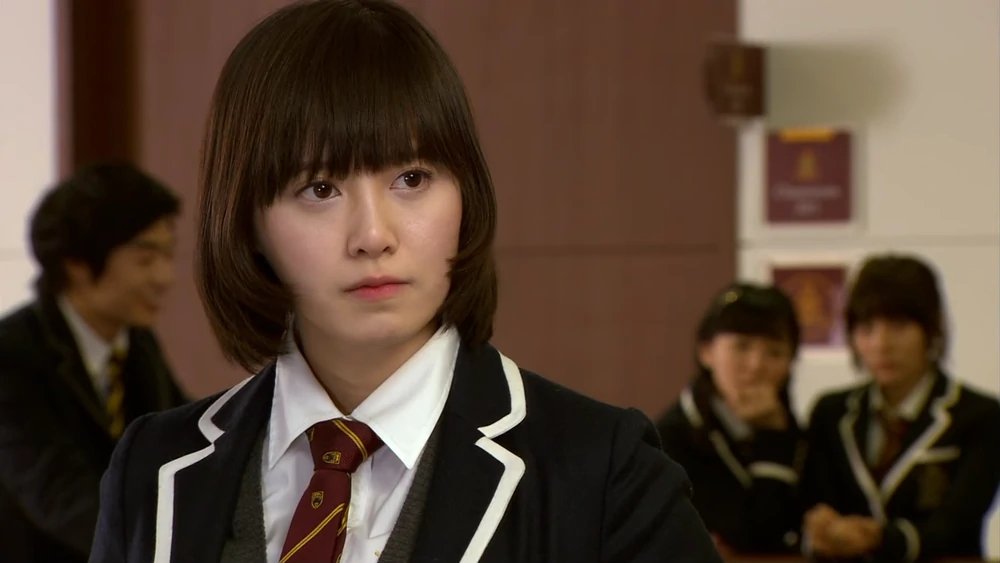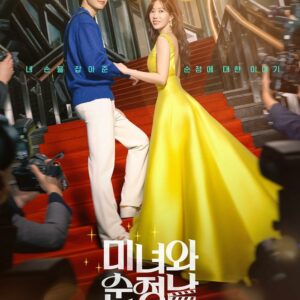Dear LT: Is there a difference between a Candy and a Pot Plant? If so, what is it?
It’s been a while since I’ve written a piece about either Candies or Pot Plants. Maybe it’s changing trends or maybe it’s the kinds of dramas I am watching these days, but I haven’t come across an example of either for a while.
Nonetheless, this is a question that came up recently so I thought I’d jot down a few thoughts on Candies, Pot Plants, how they are similar and how they differ (which does step on my ending a little bit of course). Yes there are differences between a Candy and a Pot Plant and I’m going to take some time to tease them out.
For those like me who are also nerds, you might start to wonder if you’re crazy or if parts of this answer draw on set theory. You are not crazy, you are correct. Nerd. ❤️
First we’ll start with the Candy.
A Candy or Candy girl is a common drama character and not just in Korean dramas. The term originated in Japan and the character is popular in Chinese and Taiwanese dramas as well. I’d also argue the Candy is a common character in Victorian fiction, such as Jane Eyre (and, as you can see from that post, the similarities between modern Kdrama and Victorian novels are strangely numerous).
So what characterises a Candy? Like the female lead in the original manga, Candy Candy, a Candy is impoverished but noble. She’s usually a victim of injustice but nonetheless plucky, hardworking, cheerful, and moral. If your lead is poor (or at least in some way struggling financially), hardworking but “blue collar” (usually represented by a plethora of low-paid part-time jobs), stoic (sometimes to the point of martyrdom), and righteous (putting justice or morality above the money she may need) then your character is a Candy.
As a character, Candy is often saved from her unfairly hard life and poverty by a romance with a wealthy, good looking Prince Chaebol heir or company CEO. Someone who has both the status and money that Candy does not have. So some might say that Candy is Cinderella waiting for her Prince to come.
Quintessential examples of a Candy in Korean dramas are the iconic Geum Jan-di from Boys Over Flowers (based on a Japanese manga), Go Eun-Sung in Shining Inheritance, and Go Eun-chan in Coffee Prince.



For some viewers, a Candy is an everywoman who reminds them of their daily struggles with work, money, family and love. For others, her overuse in dramas has made her somewhat annoying and her path out of poverty being almost exclusively marriage codes as regressive. Either way, Candies were a staple of Korean dramas for a very long time and can still be seen popping up here and there.
Which brings me to my next category of female lead: the Pot Plant. At her core, a Pot Plant is a female lead without agency. Documenting the rise and fall of Pot Plants in Korean dramas spawned several blog posts over many years for me (One. Two. Three), although I was more concerned with female leads who showed agency rather than those who didn’t.
For a pot plant, the imagery is everything. Pot plants are literally planted in the middle of the drama and the narrative often moves around them. I originally coined the term while watching Shut Up Flower Boy Band, where the two male leads had an argument about the female lead that would have worked just as well for an argument about a pot plant.
One of the worst examples of a Pot Plant was in the 2018 drama, Memories of the Alhambra, where female lead (and Candy), Jung Hee-joo’s lack of agency was so marked that the drama’s entire plot could have unfolded without her character in it. At no point in the drama did she take any positive action, either for her own life or for the people she supposedly cared about. She was just… there.

But does a Pot Plant have to be a Candy and vice versa? Well, no.
There is a Venn diagram of Pot Plants (female leads without agency) and Candys (impoverished and the victim of injustice) where we find the Candy/Pot Plant overlap – impoverished and the victim of injustice but nonetheless plucky, hardworking, cheerful, moral AND without any agency.
If we see Candy as being an idealised and noble being unfairly punished by a cruel universe, then this is the sweet spot at which traditional notions of karmic justice come into play. Candy doesn’t need to do anything to get her happy ending. She just has to endure cheerfully while the Universe rights itself around her.
As a fairy tale, Cinderella was not the story of a poor girl made good through her nobility and kindness. It was the story of a noble girl unfairly relegated to the wrong social circle by conniving relatives and restored to her rightful place by the Prince recognising her inherent superiority. It was the story of a reclamation of status, not a peasant to Queen story per se.
As such, it’s unfortunately too easy for stories to make their female leads passive and martyred. A makeover and a trip to the Ball is all she needs for her worth to be recognised and the conflict resolved. There will be characters who don’t see her inherent worth but they, like the evil stepmother in Cinderella, will be felled by destiny without Candy needing to take action against them. This also leads to one of the most insufferable parts of the potted Candy’s part in the narrative – because she never acts at all then her lack of action means she is absolved of any guilt for what happens in the story.
While it is possible to get Candies who aren’t Pot Plants and Pot Plant who aren’t Candies, the Venn diagram overlap is extremely large. It encompasses a significant chunk of most traditional Candies. In fact, while writing this post I could think of several examples of Candies who are not Pot Plants. But when I tried to think of a Pot Plant who wasn’t also a Candy, I could not.
And it is more interesting, perhaps, to dwell on those Candies who are not Pot Plants. Go Eun-chan (Coffee Prince) is such a popular character because of all the ways she isn’t a Pot Plant. She may be impoverished, hard working, familial and innocent but she also works hard to pursue her own dreams and to achieve her own goals without waiting for someone to save her. She wants to be with her Chaebol heir but that is something she wants as well as a career as a barista and she doesn’t rely on him for her dream’s fulfilment.
These kinds of Candies are often very popular characters because they feel real to the women watching them who also have to work hard to make ends meet, want to support their families, and often feel impotent in the face of a world that can be harsh and cruel for seemingly no reason.
However, the tendency of writers to also make their Candies a Pot Plant is potentially one of the reasons why there has been a decline in the character over the past few years. Viewers are possibly demanding their female leads have some kind of agency over their lives, even if the dramas still show hardship and struggle. And many viewers seem less comfortable with the Prince Charming solution, preferring female characters who navigate a more independent route to their liberation from hardship; one that will define their lives in terms of their own identity and achievements outside of being a wife and mother.
For whatever reason, the Candy (and her evil twin, the Pot Plant) have been seen less and less in Dramaland. And while there are some who will mourn the loss of Candy, very few people will mourn the loss of the Pot Plant.




Great to see the dragon become visible again! Here in the land of legalized marijuana, the term “pot plant” has a distinctly different meaning than a potted plant, passively waiting to be watered.
Ha! Well, the Americans are no doubt getting a whole new meaning from my pot plant posts.